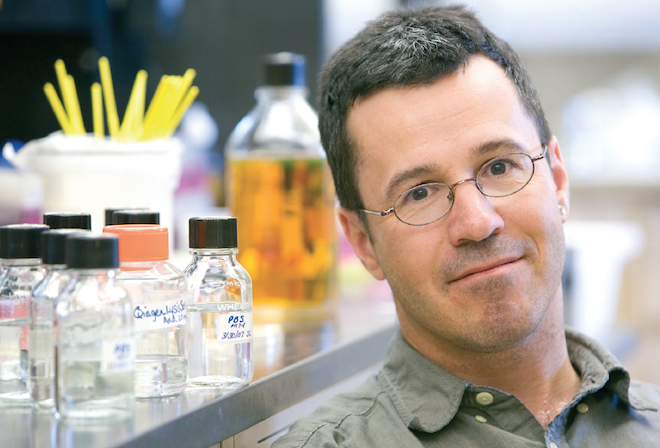
Jun 1, 2021CPS continues to fund research into listeria
Unless one counts Korean-grown Enoki mushrooms, the U.S. Centers for Disease Control have not tied fruits or vegetables to a major outbreak of listeria infections since 2016.
And yet, the pathogen is deadly enough to merit further study by the produce industry. While salmonella and E. coli foodborne illness have higher numbers of outbreaks and individual cases, Cornell University professor Martin Wiedmann said the number of deaths due to listeria is the same or higher.
“If you have an outbreak or even a case, it’s much more likely that people die, and it tends to be even more severe than E. coli. Ninety percent of people with listeria end up in the hospital, and 15-20% of people die,” Wiedmann said. “So, it’s very, very severe – what makes it worse is, some of these severe cases are actually abortions in pregnant women.”
Wiedmann, a specialist in food science, will present at the Center for Produce Safety’s (CPS) virtual research symposium this summer. CPS in 2020 had funded Wiedmann’s research evaluating prioritizing different interventions for produce processing plants. It also recently funded a study looking at the effectiveness of listeria’s resistance to hand sanitizer by Xiangyu Deng of the University of Georgia.
Uncanny survival
Of concern to the produce industry is listeria’s “uncanny” ability to live in food processing facilities for long periods of time – as much as 10-15 years, Wiedmann said. Listeria can live in the difficult-to-clean areas of machinery or cracks of the processing plant floor, infecting only a small percentage of the total product. But with modern DNA profiling of the bacteria, the CDC is able to match several cases occurring over a long period of time, and it then would initiate an investigation with interviews. Eventually, in such an investigation, CDC would visit a business conducting what’s known in the industry as a “swab-a-thon” – taking dozens of samples around the processing plant to look for pathogens.
Wiedmann distinguishes between the public health risk and the business risk.
“If (the Food and Drug Administration) or your customer finds listeria on your product, your apples, that’s a recall, and then that brings all the negative business consequences,” he said.
Different approaches
Companies use a variety of different approaches to mitigate risk. Some have staff or a third-party stage their own swab-a-thons to check if procedures work.
“That’s a very valuable strategy,” Wiedmann said. “Once a year, bring in someone independent to almost be fake FDA in terms of taking samples like FDA works, so you’re prepared and you know where your weaknesses are.”
While sanitizers are part of food safety, Wiedmann said it’s possible to overspend on sanitizer products, especially if they aren’t reaching cracks or inside machinery where the bacteria may be living.
“You’re spending your money on biofilm-busting technology, when you really should take that money and spend it on redesigning your equipment, or hiring another person on your sanitation shift, so you can take apart that equipment so you can reach the spots where the sanitizer doesn’t reach it,” he said. “Sometimes cleaning equipment doesn’t work. Sometimes you have to come up with something else. … I think in terms of sanitary equipment design we can learn a lot from the meatpacking industry.”
Wiedmann advocates that processing facilities develop programs and train staff to conduct “root cause analysis” to determine where listeria is coming from or hiding out, and then prioritize which of those root causes to first address.
Case studies
One outbreak of listeriosis in 2014 was linked to commercially produced, prepackaged caramel apples.
“In general, apples are acidic enough, and just don’t support growth of listeria,” he said. “What had happened with caramel apples is, (when) you stick this wooden stick into the core, you essentially created an environment that allowed the listeria to grow.”
For listeria on a food item to reach a level of toxicity causing death or an abortion, it usually has to grow for some time, Wiedmann said.
“For listeria to cause an issue, it needs to be on the food, but then it needs to grow on the food,” he said. “It needs to grow to high enough numbers so there is a risk of making someone sick. This whole idea of grow/not grow is very clear if you look at the types of foods that cause issues. … All these things are stored at refrigeration-level temperatures long enough that listeria can grow.”
For his research funded by CPS, Wiedmann and co-principal investigator Renata Ivanek, also of Cornell, dove into some 1,656 documents looking for what sorts of listeria-fighting interventions or strategies worked best. After narrowing the group down to 264, the team further screened them to identify about 32 of the most relevant strategies. They then validated some interventions they identified with four cooperating packinghouse facilities.
Wiedmann’s presentation at the CPS’ virtual research symposium this summer will contain a lot of real-world examples.
“I’m a scientist, and it’s all about the science, right? But, sometimes the stories you can tell about individual facilities – obviously anonymously – what issues you find can help people to see their facilities in a different light.”
— Stephen Kloosterman, associate editor; Photo: Cornell University professor Martin Wiedmann studies the impact of listeria on food safety. Photo courtesy of Cornell University
















